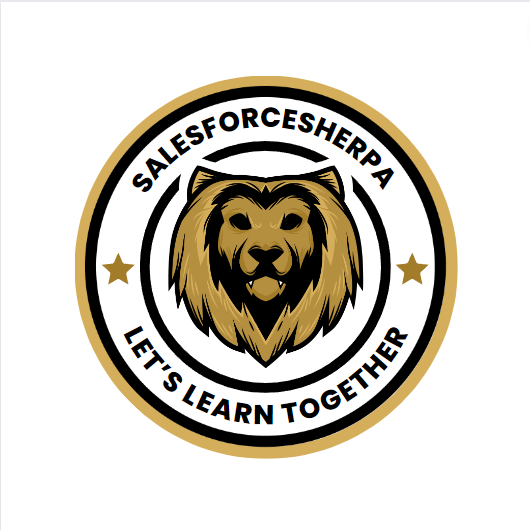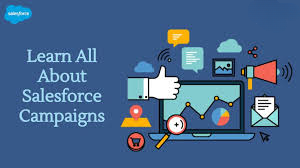Mastering Salesforce Campaigns: From Planning to Execution
 SalesforceSherpa
SalesforceSherpa
Salesforce is a powerful customer relationship management (CRM) platform that allows businesses to streamline their sales and marketing efforts. One essential feature of Salesforce is its Campaign functionality, which enables organizations to plan, execute, and track their marketing initiatives effectively. In this article, we will explore the process of mastering Salesforce Campaigns, from initial planning to successful execution.
1. Understanding Salesforce Campaigns
1.1 What are Salesforce Campaigns?
Salesforce Campaigns are a strategic marketing tool within the Salesforce CRM platform. They allow businesses to organize and manage their marketing initiatives, such as lead generation, product launches, events, and promotional campaigns. A Salesforce Campaign acts as a container that tracks the effectiveness of marketing efforts, including leads generated, opportunities created, and revenue generated.
1.2 Benefits of Salesforce Campaigns
Salesforce Campaigns offer several benefits for businesses:
Centralized Campaign Management: Salesforce provides a unified platform to plan, execute, and track campaigns, eliminating the need for multiple tools or spreadsheets.
Enhanced Lead Tracking: By associating leads with specific campaigns, businesses can track the effectiveness of their marketing efforts and optimize their strategies accordingly.
Improved Collaboration: Salesforce Campaigns enable teams to collaborate and align their efforts, ensuring a cohesive and consistent marketing message.
Data-Driven Insights: With Salesforce's robust reporting and analytics capabilities, businesses can gain valuable insights into campaign performance, enabling them to make data-driven decisions.
2. Planning Your Salesforce Campaign
Before launching a Salesforce Campaign, thorough planning is crucial. Let's explore the key steps involved:
2.1 Defining Campaign Objectives
Clearly define the objectives you want to achieve with your campaign. Is it to generate leads, promote a new product, or raise brand awareness? Setting specific, measurable goals will guide your campaign strategy.
2.2 Identifying Target Audience
Identify your target audience and understand their needs, preferences, and pain points. This knowledge will help you tailor your campaign messaging and select appropriate marketing channels.
2.3 Setting Campaign Budget
Determine the budget allocated to your campaign. Consider the costs associated with various marketing channels, content creation, advertising, and any other expenses required for successful execution.
2.4 Creating Campaign Timeline
Develop a detailed timeline that outlines the key milestones and deadlines for your campaign. This will ensure smooth execution and allow for adjustments if needed.
3. Creating a Compelling Campaign Message
Crafting a compelling campaign message is crucial to capture your audience's attention and generate interest. Here's how you can do it:
3.1 Crafting a Clear Value Proposition
Clearly communicate the unique value your product or service offers. Explain how it solves your target audience's problems or fulfills their desires.
3.2 Tailoring Messaging to Target Audience
Customize your messaging to resonate with your target audience. Use their language, address their pain points, and highlight the benefits they will receive.
3.3 Incorporating Persuasive Call-to-Actions
Include clear and persuasive call-to-actions (CTAs) in your campaign materials. Whether it's signing up for a newsletter, requesting a demo, or making a purchase, guide your audience towards the desired action.
4. Building Campaign Assets
To create a successful Salesforce Campaign, you need compelling assets that resonate with your audience. Consider the following:
4.1 Designing Engaging Landing Pages
Create visually appealing and user-friendly landing pages that align with your campaign's messaging. Optimize them for conversion by incorporating clear CTAs.
4.2 Developing Eye-Catching Visuals
Utilize captivating visuals such as images, videos, and infographics to convey your campaign's message effectively. Visual content can significantly enhance engagement and memorability.
4.3 Writing Compelling Copy
Craft compelling and persuasive copy for your campaign materials, including emails, social media posts, and advertisements. Use persuasive language, storytelling techniques, and testimonials to drive engagement.
4.4 Implementing Personalization Strategies
Leverage Salesforce's personalization capabilities to tailor your campaign assets based on customer data. Personalized messages can significantly increase relevance and response rates.
5. Launching Your Salesforce Campaign
Now it's time to launch your Salesforce Campaign and bring your marketing efforts to life. Here's what you need to consider:
5.1 Leveraging Salesforce Campaign Tools
Take advantage of Salesforce's campaign management tools, such as email automation, social media scheduling, and lead tracking. These tools will streamline your execution and save time.
5.2 Executing Multi-Channel Campaigns
Utilize various marketing channels, such as email marketing, social media, content marketing, and paid advertising, to reach your target audience effectively. A multi-channel approach maximizes your campaign's reach and impact.
5.3 Testing and Quality Assurance
Before going live, thoroughly test your campaign assets, including landing pages, emails, and advertisements. Ensure they are functioning correctly and are free of any errors or broken links.
5.4 Tracking and Analyzing Campaign Performance
Regularly monitor and analyze the performance of your campaign using Salesforce's reporting and analytics tools. Identify areas of improvement and make data-driven adjustments to optimize your results.
6. Optimizing Campaign Results
Continuous optimization is key to achieving maximum results from your Salesforce Campaign. Consider the following strategies:
6.1 Analyzing Key Performance Indicators (KPIs)
Measure the success of your campaign by tracking relevant KPIs, such as lead conversion rates, engagement metrics, and revenue generated. Analyzing these metrics will help you identify strengths and weaknesses.
6.2 Making Data-Driven Adjustments
Use the insights gained from your campaign analytics to make data-driven adjustments. Experiment with different messaging, visuals, and targeting strategies to optimize your campaign's performance.
6.3 A/B Testing and Experimentation
Conduct A/B tests to compare the performance of different campaign elements, such as subject lines, CTAs, or visuals. Experimentation allows you to uncover what resonates best with your audience.
6.4 Nurturing Campaign Leads
Don't forget to nurture the leads generated through your campaign. Implement lead nurturing strategies, such as personalized follow-up emails, to guide prospects further down the sales funnel.
7. Conclusion
Mastering Salesforce Campaigns is essential for businesses looking to optimize their marketing efforts. By following the steps outlined in this article, from planning to execution, you can create impactful campaigns that generate leads, increase brand awareness, and drive revenue. Remember to continuously analyze and optimize your campaigns based on data-driven insights to achieve the best possible results.
FAQs
1. How can Salesforce Campaigns benefit my business?
Salesforce Campaigns provide centralized campaign management, enhanced lead tracking, improved collaboration, and data-driven insights for businesses.
2. How do I define objectives for my Salesforce Campaign?
Define your objectives by setting specific, measurable goals that align with your overall marketing strategy.
3. What are some effective call-to-action strategies?
Include clear and persuasive CTAs that guide your audience towards desired actions, such as signing up, requesting a demo, or making a purchase.
4. Why is personalization important in Salesforce Campaigns?
Personalization allows you to tailor your campaign assets based on customer data, increasing relevance and response rates.
5. How can I optimize my Salesforce Campaign's performance?
Regularly track and analyze campaign performance, make data-driven adjustments, conduct A/B testing, and implement lead nurturing strategies to optimize results.
Subscribe to my newsletter
Read articles from SalesforceSherpa directly inside your inbox. Subscribe to the newsletter, and don't miss out.
Written by
